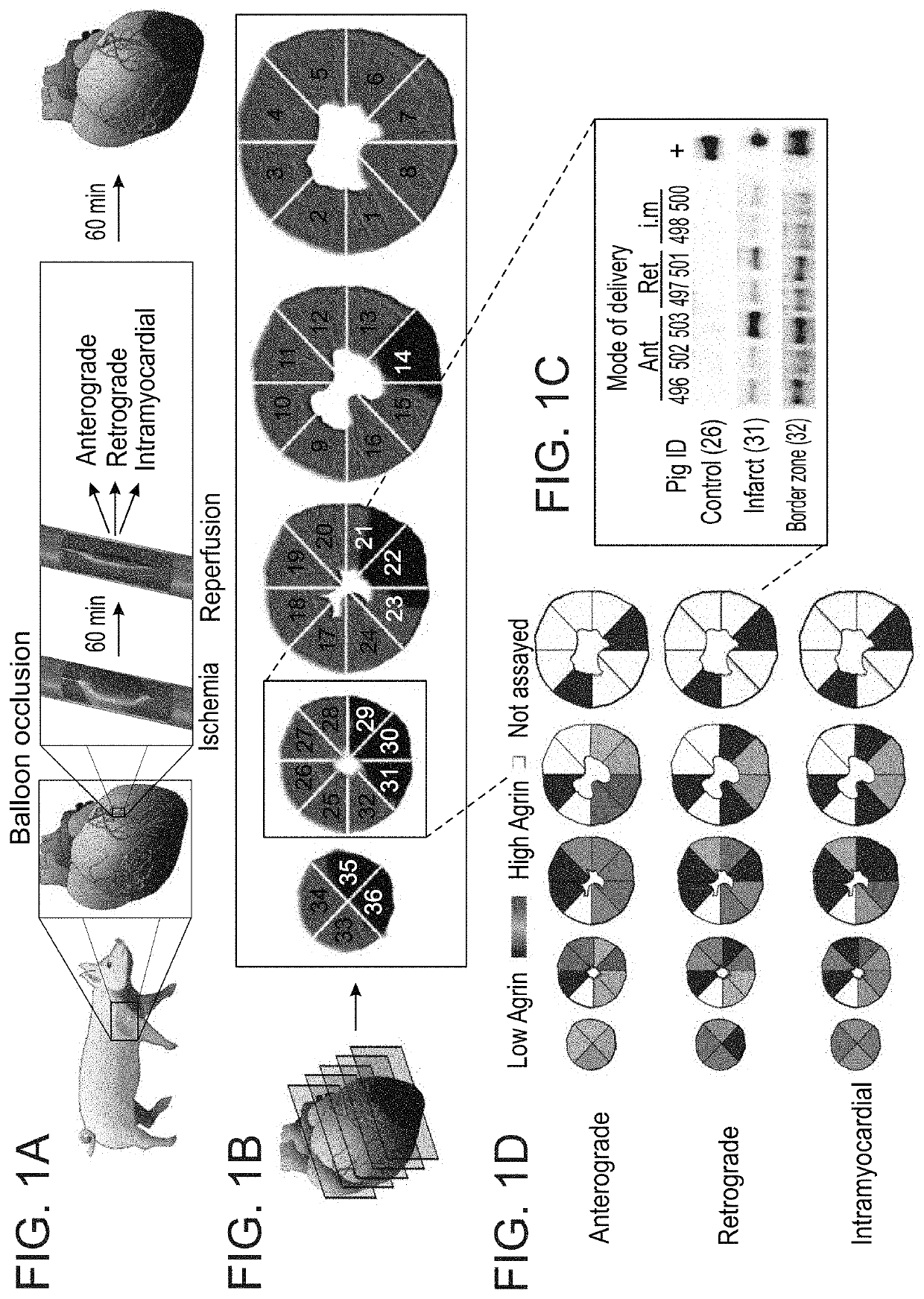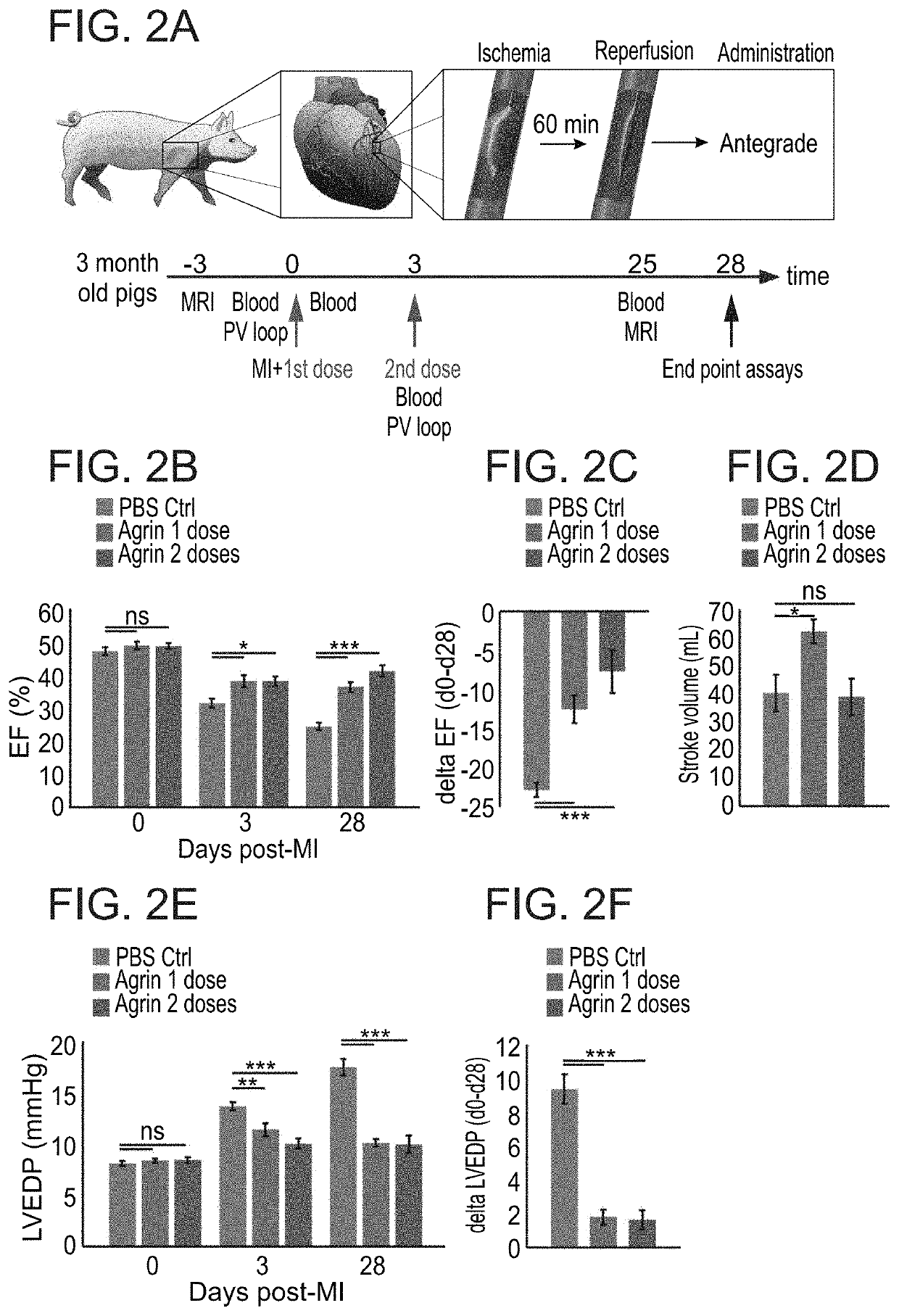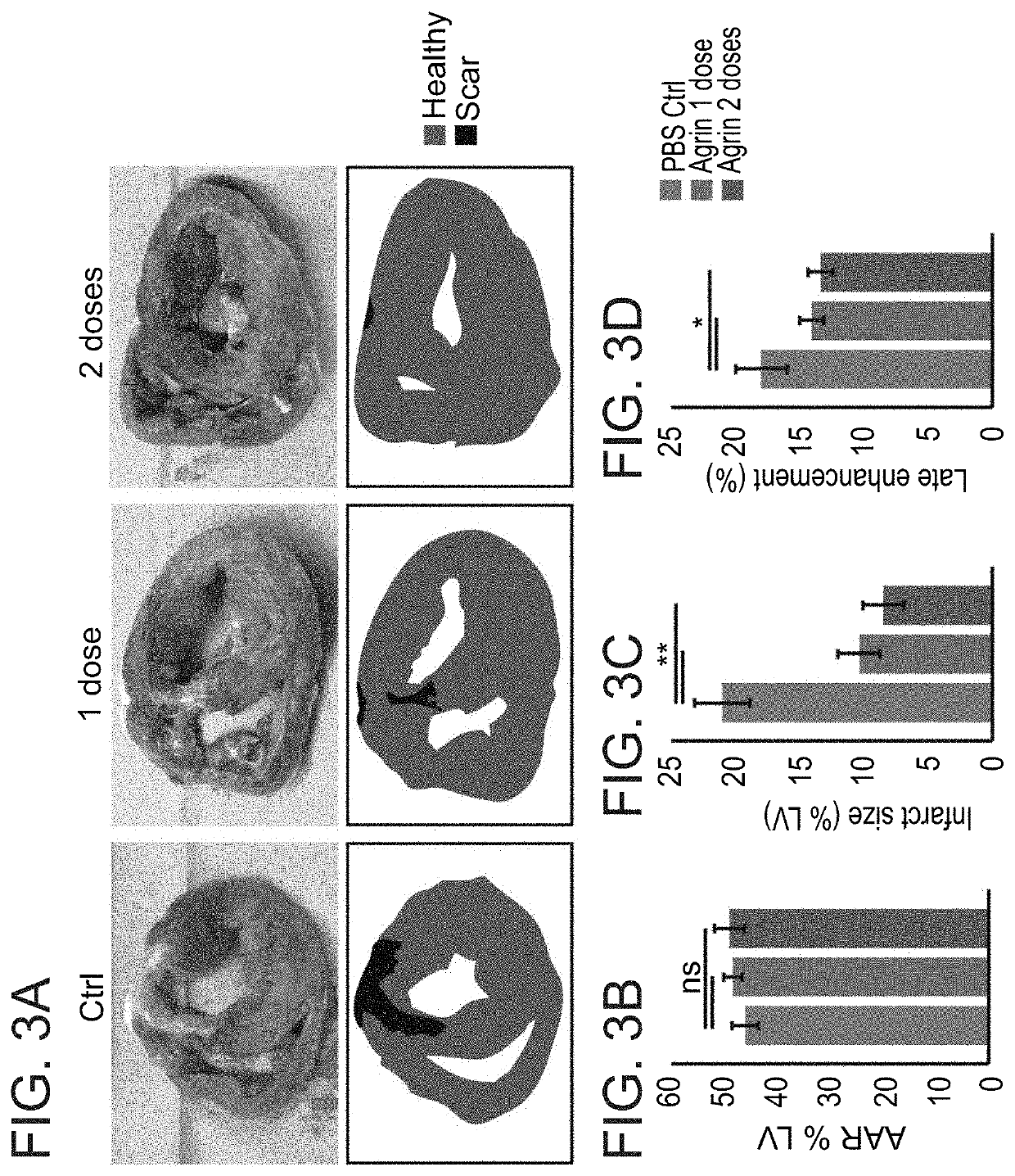Treatment of an ischemic heart disease
a technology of ischemic heart disease and treatment method, which is applied in the field of treating ischemic heart disease, can solve the problems of no clinically valid treatment option for treating myocardial infarction, ongoing deterioration of heart, and dilated cardiomyopathy
- Summary
- Abstract
- Description
- Claims
- Application Information
AI Technical Summary
Benefits of technology
Problems solved by technology
Method used
Image
Examples
example 1
Local Delivery Method of Agrin into the Ischemic Regions of the Heart
[0166]In search for an efficient way to specifically deliver Agrin into the infarcted heart, the ischemia-reperfusion model of MI in pigs was used, as depicted in FIG. 1A. The LAD was occluded for an hour, reperfused and treated with 33 μg / Kg human rAgrin (C′ Agrin, 6624-AG, R&D systems) at reperfusion, delivered in one of three methods: anterograde (autoperfusion into the LAD), retrograde (into the great cardiac vein)6, or intramyocardial (into the left ventricle wall, through the endocardium). Anterograde injection was performed using the same catheter used for reperfusion, while retrograde injection included catheterization of the great cardiac vein (directed through the right Jugular vein). Intramyocardial injection was performed using the C-cath catheter (Celyad), injecting through the endocardium at 9 different hypokinetic region of the left ventricular wall. After an additional 60 minutes, hearts were harves...
example 2
Agrin Improves Heart Function in Pigs after Acute MI
[0167]The effectiveness of Agrin treatment after MI in pigs was tested. To do so, infarcted pigs were treated with rhAg (at 33 μg / Kg) or saline (control) either immediately after reperfusion, or adding a second dose 3 days post MI using the antegrade method (FIG. 2A). As shown, rhAg treated hearts had improved heart function. Post ischemic loss of the ejection fraction (EF) parameter, measured by fluoroscopy, was reduced after rhAg administration (FIGS. 2B-C). Second, the stroke volume, i.e., the amount of blood pumped into the aorta during each stroke, increased in the rhAg (single dose only) treated animals, as measured by MRI (FIG. 2D). Another important parameter for heart function is left ventricular end-diastolic pressure (LVEDP), which increases post MI due to the fact that injured hearts display increased rigidity. Interestingly, rhAg treatment prevented, almost completely, the MI-induced LVEDP increase (FIGS. 2E-F). An inc...
example 3
Agrin Reduces Scar Tissue and Prevents Remodeling of the Infarcted Heart
[0168]One of the most prominent and harmful consequences of MI is the excessive scar expansion and adverse remodeling of the heart, which includes CM hypertrophy, ventricular dilation and overall increased heart weight. Therefore, we examined these parameters in the infarcted pigs' hearts. Scarring within the infarcted hearts was reduced significantly in the rhAg treated animals (FIGS. 3A-D), as assessed by both triphenyltetrazolium chloride (TTC) staining (FIG. 3C) and MRI (Late enhancement, FIG. 3D). The increase in heart weight observed after MI is another prevalent remodeling feature of injured animals, which was reduced in rhAg treated hearts 28 days post MI, presented as heart to body weight ratio (HW / BW) (FIG. 6A). In fact, rhAg treated animals resembled the pre-ischemic parameter (FIG. 6B). Finally, heart remodeling is associated with CM hypertrophy, which naturally happens after injury to augment ventri...
PUM
| Property | Measurement | Unit |
|---|---|---|
| Time | aaaaa | aaaaa |
| Mass | aaaaa | aaaaa |
| Time | aaaaa | aaaaa |
Abstract
Description
Claims
Application Information
 Login to View More
Login to View More - R&D
- Intellectual Property
- Life Sciences
- Materials
- Tech Scout
- Unparalleled Data Quality
- Higher Quality Content
- 60% Fewer Hallucinations
Browse by: Latest US Patents, China's latest patents, Technical Efficacy Thesaurus, Application Domain, Technology Topic, Popular Technical Reports.
© 2025 PatSnap. All rights reserved.Legal|Privacy policy|Modern Slavery Act Transparency Statement|Sitemap|About US| Contact US: help@patsnap.com



